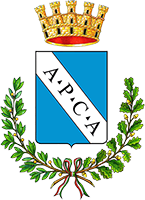
According to a tradition attested in the work of the scholar Cato the Elder, Ameria was founded by the eponymous Amiro in the year 1134 BC, 963 years before the war of the Romans against the king of Macedonia, Perseus.
The ancient foundation that the antiquarian tradition attributes to the city is not contradicted by the oldest archaeological traces: the first man-made interactions seem to settle it on the cusp between the third and second millennium BC. Pottery remains and a village of huts found on the south-eastern slope allow us to hypothesize the existence of small, scattered settlements on the hill between the Bronze Age and the Iron Age. Between the sixth and fifth centuries the Umbrian town of Amer had to be structured and made use of an extra-urban sanctuary in the Pantanelli area with an adjoining cemetery. The level of social articulation achieved by the city is reflected at the end of the fourth century in the rich material from the graves of a new necropolis area (see Necropolis Ex-Consortium) that extends along the edge of the town of Amerina (see Road Roman). At the beginning of the third century official relations with Rome began: a political reality that held a potentially great expansive horizon of the Umbrian and Falisci territories.
The construction of the walls (see Walls) was undertaken after 90 BC. With the transformation of the city in municipium, the planning of urban infrastructure was put into effect, until it saw its completion in the Augustan age, when Ameria became part of Region VI. The city then lives a phase of intense public building activity, complemented by the development of residential areas: many domus had private rooms with floors covered with mosaics, such as those embedded in the cellars of Palazzo Venturelli and the area occupied by the Palazzo Farrattini.
The city was endowed with a Forum, with the cistern below, of a theater on the eastern slopes of the stronghold, and the paved streets with drainage system below. Along two important roads, linking the city with Rome on the one hand, with the centers of the Conca Ternana on the other, the campus and the amphitheater probably arose. Towards the middle of the second century A.D. the baths were built in the south-western urban sector (Palazzo Farrattini Baths and Roman domus), whose floors were decorated with mosaics that are presumed to be duotone created by local workshops for the use of innovative and unusual patterns.
This intense building activity, evidently connected with the existence of social classes in a position to self-promote and to invest in the creation of an urban design appropriate and compliant with the most prosperous municipalities of Roman influence, is destined to fade in later centuries. From the third century. A.D., Ameria was assigned, according to the new territorial organization sponsored by the Tetrarchy, to the province of Tuscia et Umbria. Probably the late antique and early medieval settlement continued to insist on an area comprised within the perimeter of the polygonal walls and the Borgo. Epigraphic evidence reveals the existence of a Christian community in the fourth century (CIL XI, 4565, 4566; ICI VI, p. 58, n. 37) and of a diocese from the middle of the fifth century (1759-1798 Mansi, VII, col. 967). In the next century, Ameria assumed importance as a stronghold of control, due to its fortresses along the Via Amerina: it is believed that it passed under Byzantine control in 538, suffering a fate like that of Todi and Chiusi. Contested between the Goths, Lombards and Byzantines for its privileged position as a strategic outpost in 742, the city returned under the Church’s control thanks to Liutprando, becaming part of the heritage of the Holy See as Castrum Sancti Petri.


